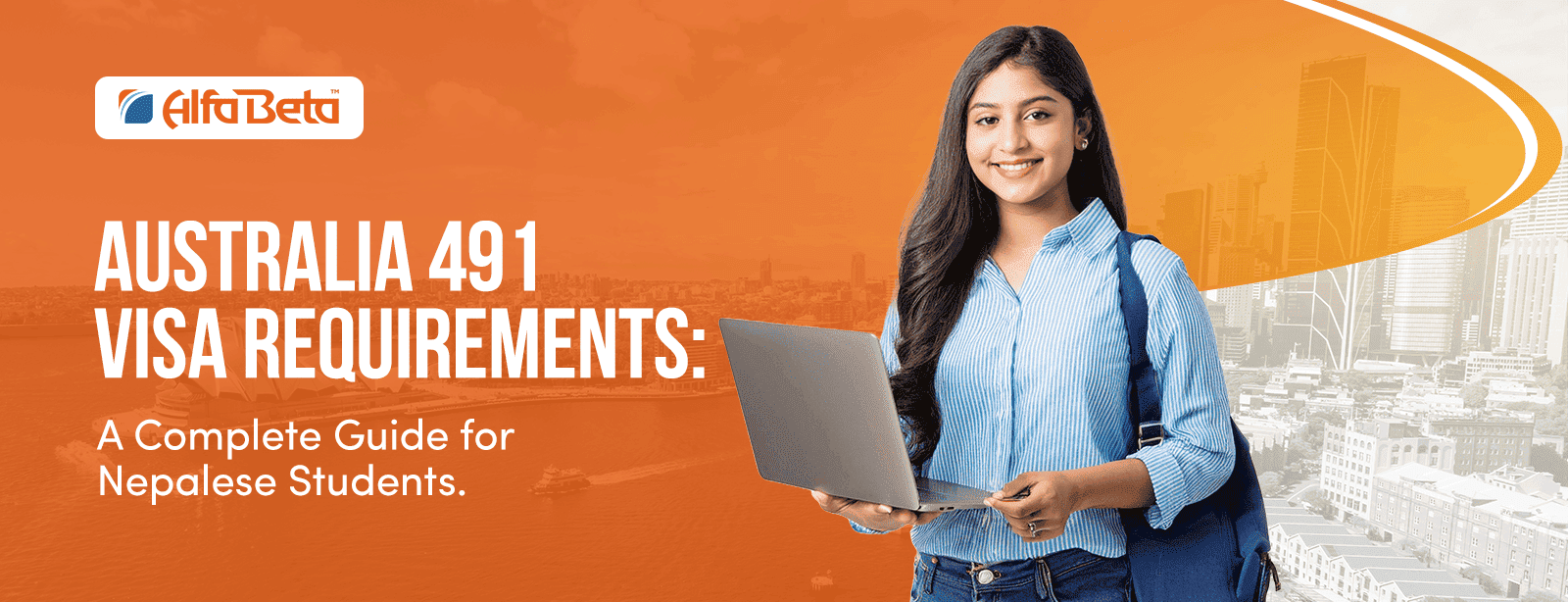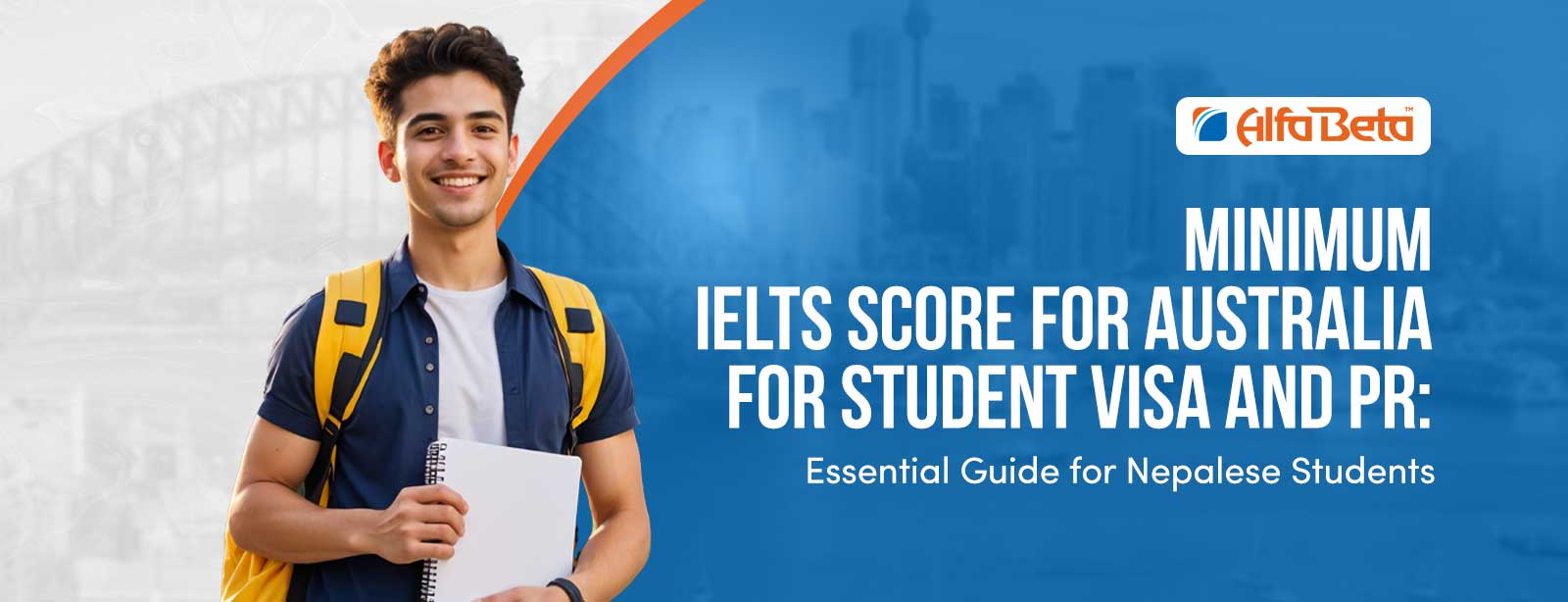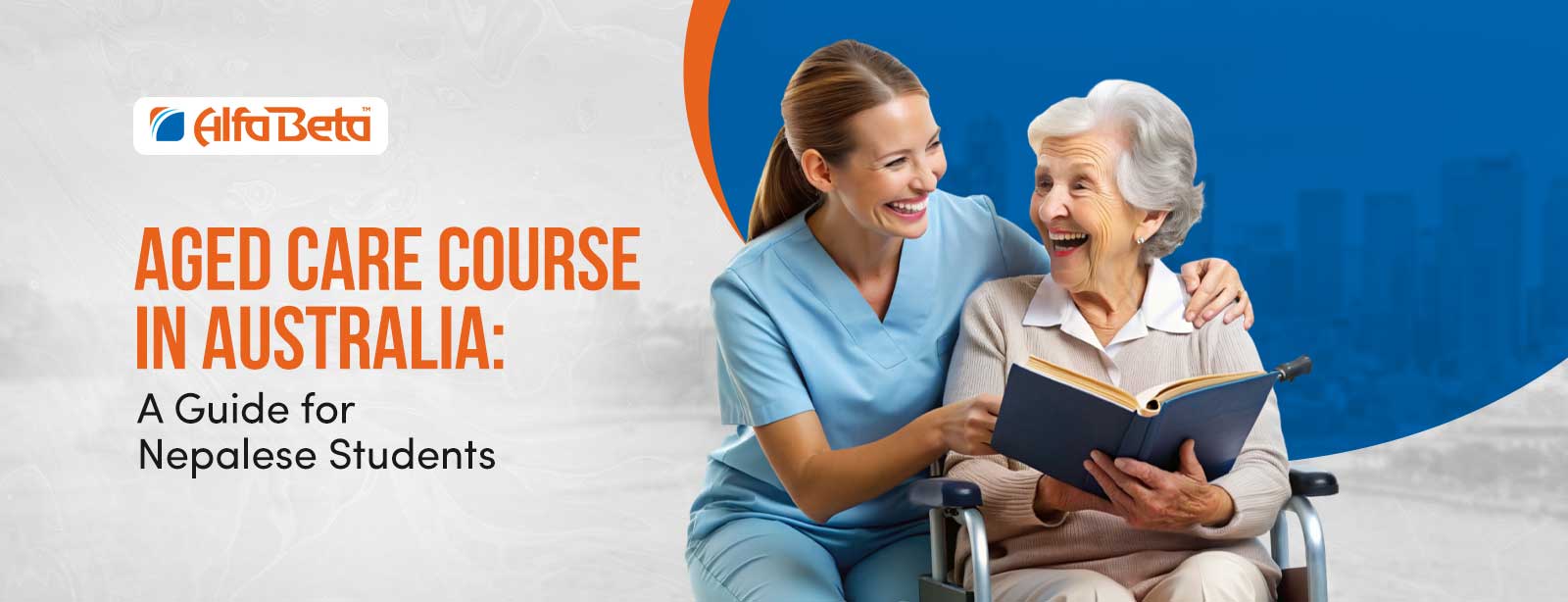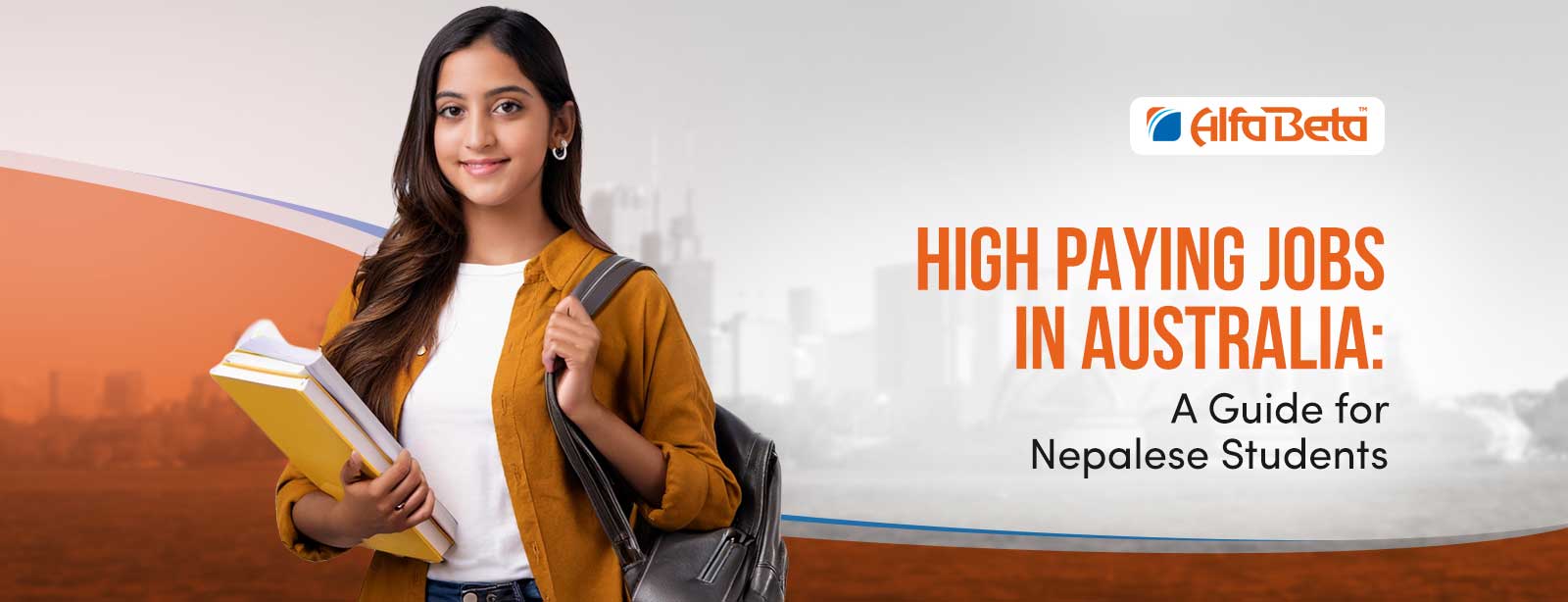Introduction
Australia has long stood out as a prime destination for international students, including those from Nepal, who are drawn to its world-class education, multicultural lifestyle, and promising career prospects. In recent years, more Nepalese students are not only studying in Australia but also exploring opportunities to build a long-term future there. Studying abroad in Australia has become a popular trend among Nepalese students seeking better education and work opportunities.
One of the most discussed pathways to living and working in Australia is the Skilled Work Regional Visa (Subclass 491). Designed to bring skilled workers to regional parts of Australia, this visa provides a unique opportunity for Nepalese graduates and professionals to establish themselves while moving closer to permanent residency. For Nepalese students dreaming of a stable life in Australia, understanding how the 491 visa works could be a turning point. This guide provides all the necessary requirements, benefits, application steps, and practical advice in one place.
What Is the 491 Visa?
The Subclass 491 visa is part of Australia’s effort to encourage migration to regional areas, focusing on towns and smaller cities rather than major cities like Sydney, Melbourne, or Brisbane, where skilled labor is in demand. It is a provisional visa, allowing holders to live, work, and study in designated regional areas of Australia for up to five years. After meeting specific criteria, it may lead to permanent residency after three years. The main goal of this visa is to develop regional areas by welcoming skilled and educated individuals.
Key Highlights of the 491 Visa:
- Duration: Valid for 5 years
- Eligibility for PR: After 3 years of living and working in a regional area with a minimum taxable income (currently AUD $53,900/year)
- Sponsorship Required: By a state or territory government or an eligible family member living in a designated regional area
- Full Work and Study Rights: You can work full-time and continue studies in regional areas while holding the visa
- Pathway to Subclass 191 Visa: Permanent residency after meeting all criteria
What makes the 491 visa particularly attractive for Nepalese students is its flexibility and benefits. After completing studies, especially in regional institutions, graduates can transition to this visa with the right strategy and guidance from experienced counselors, such as those at Alfa Beta Consultancy.
Who Can Apply for the 491 Visa?
The 491 visa is not limited to international students but is highly beneficial for Nepalese students who have graduated from an Australian institution and are looking to live and work in a regional area. It can be an ideal fit for those seeking a pathway to permanent residency.
Eligibility Overview:
- Age: Under 45 years at the time of invitation
- English Language: Competent English (IELTS 6.0 in each band or equivalent)
- Occupation: Must be listed on the relevant Skilled Occupation List
- Skills Assessment: A positive assessment from the designated assessing body
- Points Score: Minimum 65 points on the immigration points test
- Nomination or Sponsorship: By a state/territory government or eligible family member
- Health & Character: Must meet Australia’s health and police clearance standards
Benefits of the 491 Visa for Nepalese Students
For Nepalese students weighing the advantages and disadvantages of staying in Australia, the 491 visa offers several real-life benefits:
- Pathway to Permanent Residency: After living in a regional area for 3 years and earning the required income, you can apply for the Subclass 191 visa for permanent residency.
- Lower Living Costs: Compared to major cities, regional towns have more affordable rent, groceries, and utilities, easing financial pressure in post-study life.
- Stronger Job Opportunities: Regional areas actively seek skilled professionals, offering less competition and better chances for full-time roles.
- Community Support: Many regional areas have established Nepalese communities, student networks, and multicultural organizations, making adjustment smoother.
- Family-Friendly: You can include your partner and children in your visa application, allowing loved ones to settle with you.
Key Requirements of the 491 Visa
To qualify for the 491 visa, applicants must meet several conditions. Here’s a simplified table for reference:
| Requirement | Details |
|---|---|
| Age | Must be under 45 years at time of invitation |
| English Proficiency | Minimum IELTS 6.0 in each band or equivalent (PTE/TOEFL acceptable too) |
| Skills Assessment | Positive assessment required from relevant authority |
| Points Requirement | At least 65 points on the skilled migration points test |
| Occupation List | Must nominate an occupation listed under the 491 Skilled Occupation List |
| Nomination/Sponsorship | From a state/territory or eligible family member in a regional area |
| Health & Character | Pass medical exam and obtain police clearance certificates |
Popular Occupations Among Nepalese Students
Choosing the right occupation is crucial. Below are some in-demand professions among Nepalese graduates commonly accepted under the 491 visa stream:
| Occupation | Code |
|---|---|
| Civil Engineer | 233211 |
| Registered Nurse | 254499 |
| ICT Business Analyst | 261111 |
| Software Engineer | 261313 |
| Accountant | 221111 |
Each profession requires a skills assessment by a relevant authority, such as:
- Engineers Australia for engineers
- Australian Nursing and Midwifery Accreditation Council (ANMAC) for nurses
- Australian Computer Society (ACS) for IT professionals
Understanding the Points System
The 491 visa uses a points-based system, and higher points improve your chances of receiving an invitation. Here’s how points are awarded:
| Category | Points |
|---|---|
| Age (25–32 years) | 30 |
| English Proficiency (IELTS 7+) | 10 |
| Australian Qualifications | Up to 20 |
| Overseas Work Experience | Up to 15 |
| Australian Work Experience | Up to 20 |
| Regional Study | 5 |
| State Nomination or Family Sponsorship | 15 |
Example Case:
Consider a 27-year-old Nepalese student who:
- Holds a Master’s degree
- Studied in a regional university
- Achieved IELTS 7.0 in all bands
- Was nominated by South Australia
Estimated points:
- Age: 30
- English: 10
- Education: 15
- Regional Study: 5
- Nomination: 15
- Total = 75 points (Well above the minimum!)
Step-by-Step Application Process
Here’s a breakdown of how Nepalese students can apply for the 491 visa:
- Choose an Occupation: Ensure your field is on the Skilled Occupation List.
- Get Skills Assessment: Submit documents to the relevant authority.
- Take an English Test: IELTS, PTE, or TOEFL.
- Submit an Expression of Interest (EOI): Via the SkillSelect system.
- Apply for Nomination or Sponsorship: Each state or territory has its own guidelines.
- Wait for an Invitation: If your EOI is successful, you’ll be invited to apply.
- Lodge Your Visa Application: Submit documents, police checks, and health exam results.
- Receive Outcome and Prepare to Move: Once approved, arrange to settle in a regional location.
Life in Regional Australia
Many people assume regional areas are remote or underdeveloped, but cities like Hobart, Adelaide, Darwin, and Ballarat are thriving with universities, hospitals, IT hubs, and cultural centers. Living in regional areas offers:
- Affordable housing
- Friendly, multicultural communities
- Career opportunities in engineering, health, agriculture, and more
- Peaceful, nature-filled surroundings
- Active Nepalese community groups and events
Common Challenges and How to Overcome Them
The 491 visa brings opportunities but also challenges, especially during early settlement. Challenges Nepalese students may face:
- Language Barriers: Improve by joining local workshops and language support groups.
- Employment Gaps: Consider internships or volunteer work to gain local experience.
- Cultural Adaptation: Participate in local festivals, social clubs, or student groups.
- Homesickness: Stay connected with Nepali communities and events nearby.
How Alfa Beta Consultancy Can Help You
Navigating Australia’s visa process can be overwhelming. Alfa Beta Consultancy, with years of experience guiding Nepalese students, offers:
- Personalized eligibility evaluations
- Help with document preparation and visa application
- Skilled migration consultations
- Test prep (IELTS, PTE, NAATI, etc.)
- Settlement and job support in regional Australia
Partnering with a consultancy can increase your chances of success by avoiding errors and delays.
Frequently Asked Questions (FAQs)
- Can I apply for the 491 visa while still on a student visa?
Yes, as long as you meet all requirements, many students transition directly after completing their degree.
- How long before I can apply for PR?
You need to live and work in a designated regional area for at least 3 years while earning the required income.
- Can I move to a different regional area after getting the visa?
Yes, but you must stay in a designated regional area. Moving to a metro city can breach visa conditions.
- Can I bring my family with me?
Yes, your partner and children can be included in the application and will enjoy similar rights.
Conclusion
The 491 visa is more than a temporary permit; it’s a powerful step toward a stable future in Australia. For Nepalese students finishing their studies and planning their next phase, this visa offers hope, opportunity, and direction. From the affordability and lifestyle of regional areas to the direct path to permanent residency, the benefits are clear. With proper planning, accurate documentation, and expert help from consultancies like Alfa Beta, turning your Australian dream into reality is achievable.





